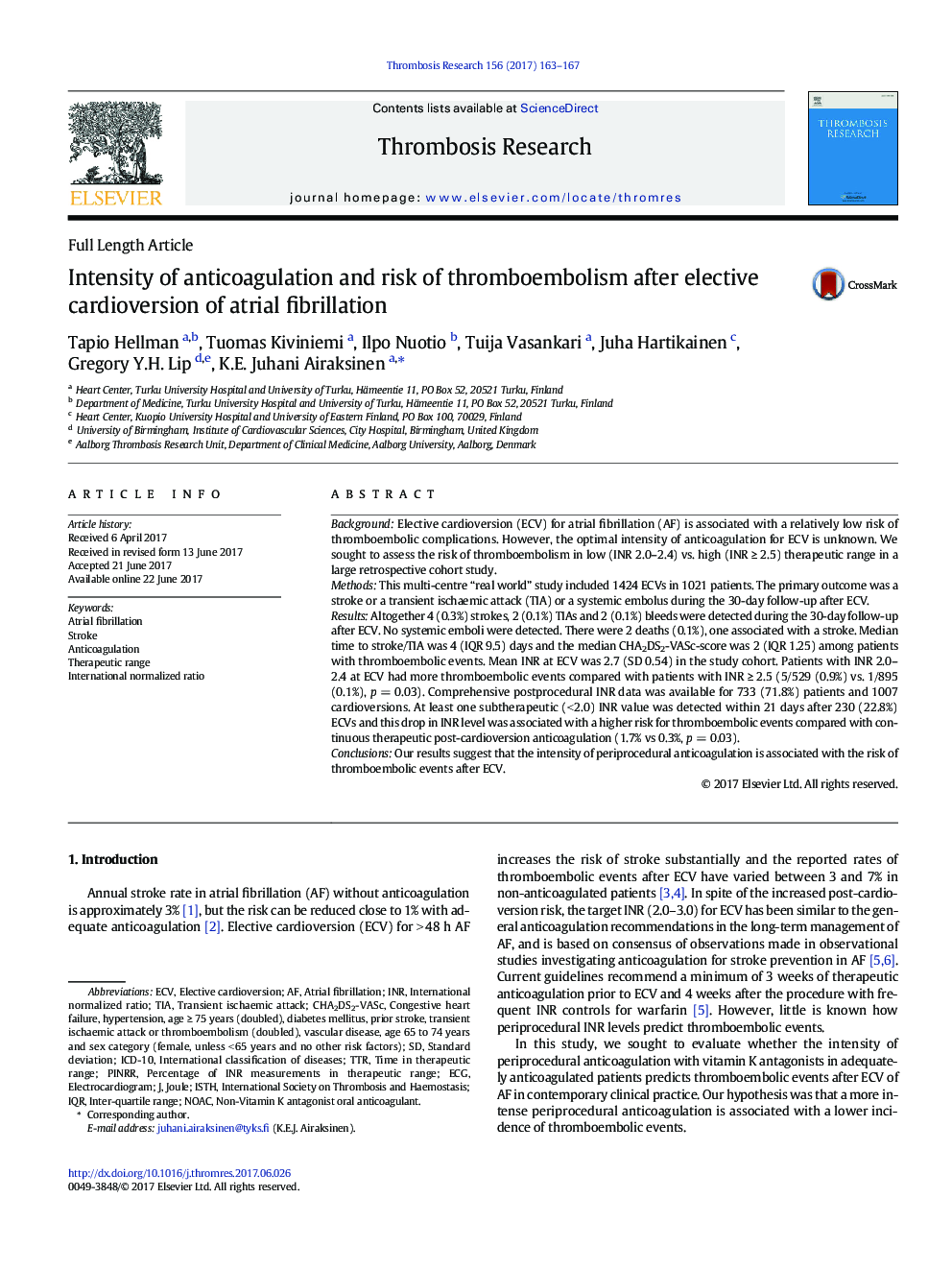| کد مقاله | کد نشریه | سال انتشار | مقاله انگلیسی | نسخه تمام متن |
|---|---|---|---|---|
| 5621862 | 1579187 | 2017 | 5 صفحه PDF | دانلود رایگان |
- Risk of thromboembolic events in cohort of AF patients undergoing ECV was explored.
- The incidence of thromboembolic events was 0.4%.
- Patients with INR 2.0-2.4 at ECV had higher risk than those with INR â¥Â 2.5.
- A drop in INR to low (<Â 2.0) levels was detected after 22.8% cardioversions.
- The INR drop was also associated with an increased risk for a thromboembolic event.
BackgroundElective cardioversion (ECV) for atrial fibrillation (AF) is associated with a relatively low risk of thromboembolic complications. However, the optimal intensity of anticoagulation for ECV is unknown. We sought to assess the risk of thromboembolism in low (INR 2.0-2.4) vs. high (INR â¥Â 2.5) therapeutic range in a large retrospective cohort study.MethodsThis multi-centre “real world” study included 1424 ECVs in 1021 patients. The primary outcome was a stroke or a transient ischaemic attack (TIA) or a systemic embolus during the 30-day follow-up after ECV.ResultsAltogether 4 (0.3%) strokes, 2 (0.1%) TIAs and 2 (0.1%) bleeds were detected during the 30-day follow-up after ECV. No systemic emboli were detected. There were 2 deaths (0.1%), one associated with a stroke. Median time to stroke/TIA was 4 (IQR 9.5) days and the median CHA2DS2-VASc-score was 2 (IQR 1.25) among patients with thromboembolic events. Mean INR at ECV was 2.7 (SD 0.54) in the study cohort. Patients with INR 2.0-2.4 at ECV had more thromboembolic events compared with patients with INR â¥Â 2.5 (5/529 (0.9%) vs. 1/895 (0.1%), p = 0.03). Comprehensive postprocedural INR data was available for 733 (71.8%) patients and 1007 cardioversions. At least one subtherapeutic (< 2.0) INR value was detected within 21 days after 230 (22.8%) ECVs and this drop in INR level was associated with a higher risk for thromboembolic events compared with continuous therapeutic post-cardioversion anticoagulation (1.7% vs 0.3%, p = 0.03).ConclusionsOur results suggest that the intensity of periprocedural anticoagulation is associated with the risk of thromboembolic events after ECV.
Journal: Thrombosis Research - Volume 156, August 2017, Pages 163-167
